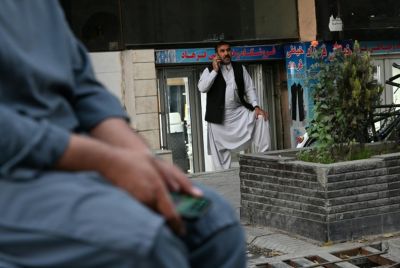Tokyo is rocked, but Pacific coast of Tohoku is devastated

I sat down and started to reach for the mug of coffee that my wife had made for me. My outstretched hand did not make it to the mug because my eyes were fixed on a scene of horror about to unfold on the television.
At the top of the screen was a wave, or more accurately, an immense wall of water rapidly approaching a small port. Just before grabbing the mug, I noticed a man exit a building, maybe a quarter mile from the shoreline, and walk up a lane to his left. He did not run and may have been unaware of the wave and its size or may have taken false comfort in the fact that there were streets of buildings between himself and the harbour wall. No matter, for I was witnessing the last seconds of his life as sure as if I had been witnessing his execution.
There were, no doubt, other figures on the screen, all now doomed as the wave proceeded to envelop, knock down and pulverise everything in its relentless path, lifting whole houses from their foundations and at times carrying these same buildings for a distance before smashing them like matchsticks. Cars and trucks of all descriptions caught up in this tangled mess, boats and fishing vessels likewise, as the wave left the town and proceeded over the intensely cultivated land for some further six miles.
The report now moved to Kesennuma, a town in the north of Miyagi Prefecture and about 300 miles north east of Tokyo. The whole town of 74,000 appeared to be ablaze, like an updated version of an Hieronymus Bosch portrait of Hell.
Natori was the next town the newsreel concentrated upon. A town of 73,000 with some 26 per cent working in manufacturing and industry and some seven per cent still reliant on farming and fishing, the town lies on a flat coastal plain about 10 miles south of Sendai, Miyagi Prefecture's capital and the site of Sendai Airport.
Doubly unfortunate, Natori City was on fire by nightfall, the Airport enveloped by the tsunami, surrounded by a sea of mud and debris with over 2,000 passengers stranded on the roof of the building. Sendai Airport being but 2 meters above sea-level, the tsunami reached some 30 feet above the terminal's base. There are a lot of grateful people that the building withstood the impact.
Not so fortunate for thousands of people in Sendai itself. A city of 1,030,000, the wave impacted severely on Wakabayashi Ward (130,000) pushing some five to six miles inland from the port area and it is reported that in the Arahama district, all 2,700 houses have been destroyed and swept away.
Hundreds of miles to the south in Greater Tokyo strong tremors were being felt and some 50 people have been reported killed. Later footage showed broken windows, falling masonry and street signs in Yokohama. The night sky was lit up by the burning Cosmo Oil Refinery explosion in Chiba Prefecture across from Tokyo's harbour area.
Much of Japan's nuclear energy is produced in Fukushima Prefecture. The quake and tsunami have caused severe damage to three plants in particular and some 80,000 people have been moved out of their immediate area and as many again are on alert to move if the situation deteriorates.
The Tohoku Earthquake on 11, March 2011 is now officially rated as 9.0 on the Richter scale and the worst ever suffered by Japan. Its epicentre was 81 miles off Oshika Peninsula in North East Japan at a depth of 15.2 miles. Most of the damage and loss of life was caused by the tsunami which the quake released with waves up to 10 meters (33 feet) hitting some 600 kilometers of coast. So powerful was the quake that it moved the 88,017 square miles of the island of Honshu, eight feet.
As yet there is no accurate figure for the dead but some coastal towns are reporting that over half their population is "missing". The police chief in Miyagi Prefecture has stated that a realistic expectation for this Prefecture alone, is 10,000 dead.
Words cannot adequately express tragedy on this scale and I don't feel that it is quite the moment to look at the economic implications, so I shall leave it at that and spare a thought for the victims and their families.
© Copyright IBTimes 2025. All rights reserved.





















